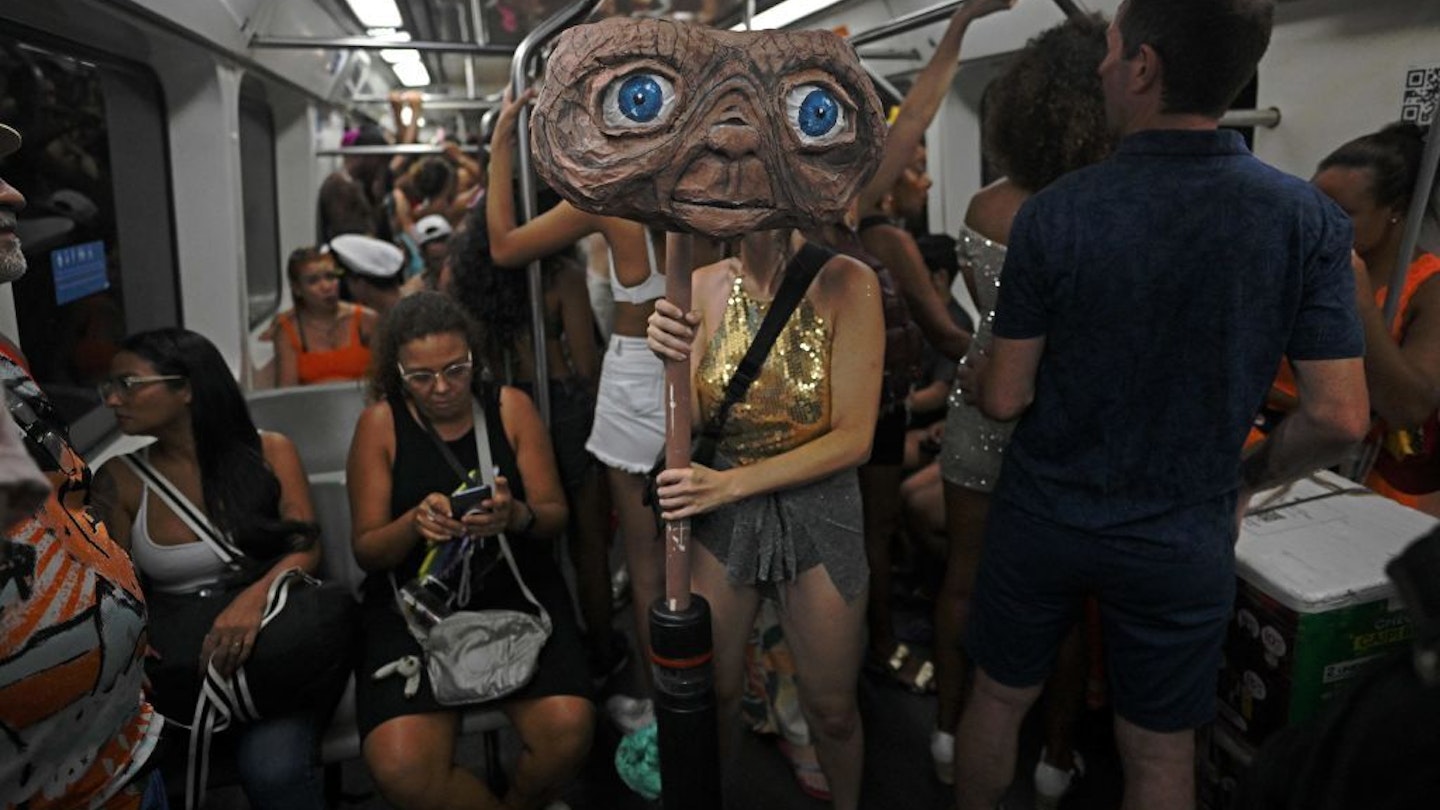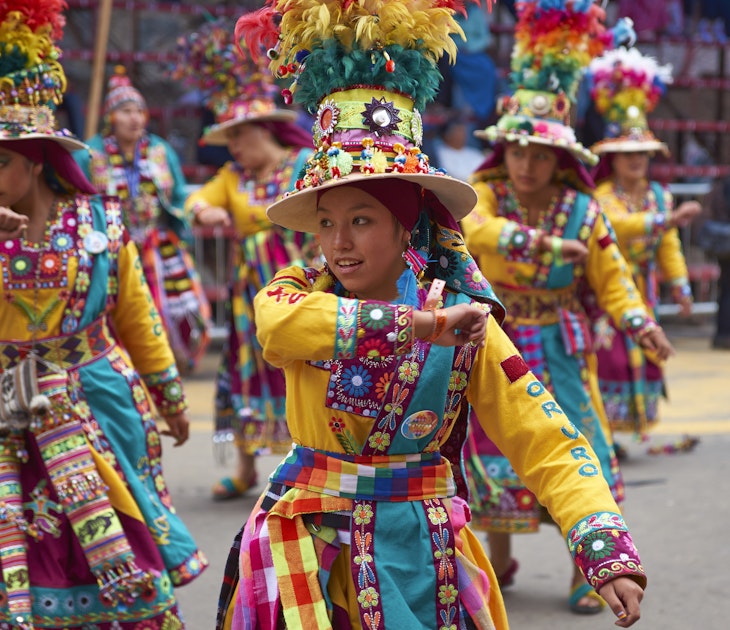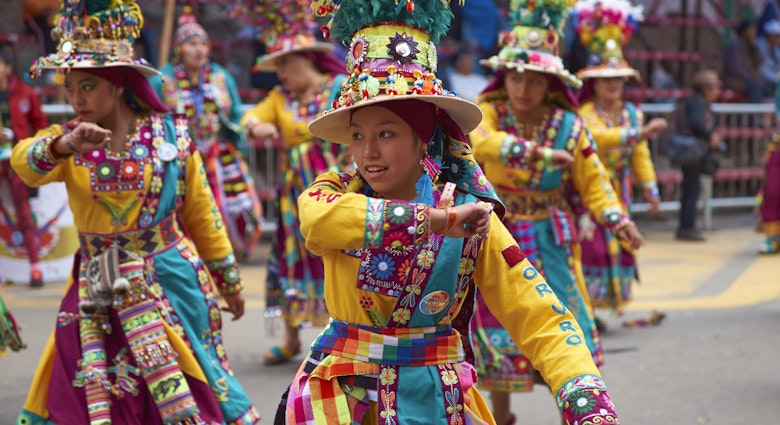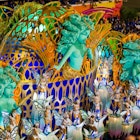The world’s largest street party changed my life. As I visit for a third time, here is everything you need to know to make sense of Carnaval 2024.
Had anyone been stood next to me during my first Rio de Janeiro Carnaval in 2013, they would have seen my brain explode.
Everything about the world’s largest street party – it attracts around two million people each year – rattled me to my core. It's not hyperbolic to say it changed my life.
1. What exactly is Rio Carnaval?
Now I’m back in Brazil for my third Carnaval, I want to share some things to help you make sense of the chaos. But first, what is Carnaval? Technically, it’s a religious celebration that dates back hundreds of years. It was a way to celebrate the days before Lent – Carnaval means “farewell meat” in Latin. But Jesus’ disciples wouldn’t recognize the Carnaval of today.
For eight days (February 9–17, 2024), some 500 blocos (“blocks” where bands play) turn the entire city of Rio de Janeiro into one giant street party whilst more elaborate performances take place in the legendary Sambódromo (Sambadrome). It can all feel overwhelming. But that’s sort of the point. But here are some things to know before you go.
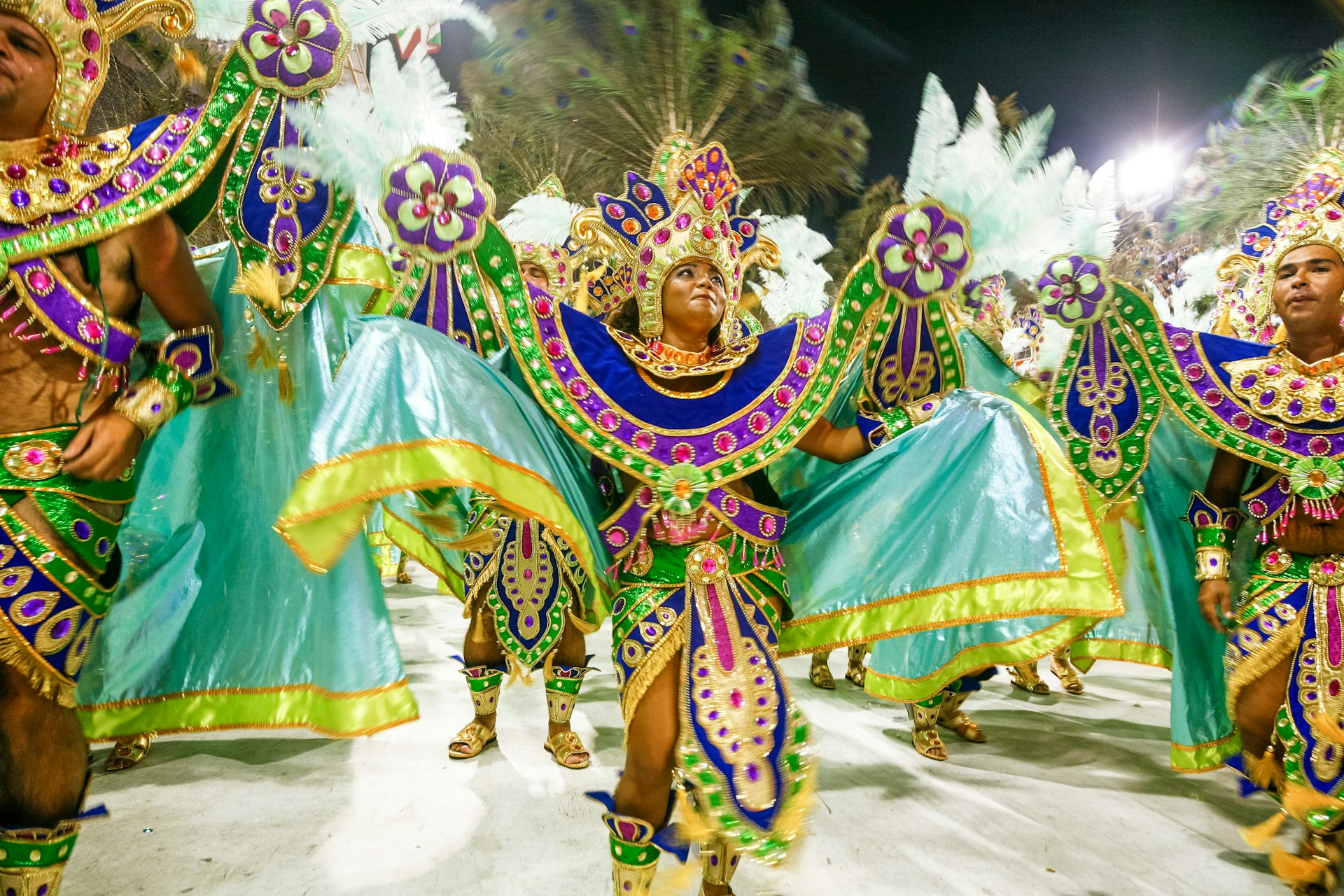
2. You don’t have to go for the whole Carnaval
Carnaval is technically eight days, five of which are statutory holidays in Brazil. The partying begins as soon as the champagne stains the carpet on New Year’s Eve and doesn’t simmer down until the end of summer. Rio de Janeiro hosts plenty of pre-Carnaval blocos, and you can see samba schools warm up in the Sambódromo without costumes or floats in December and January. So if you don’t come for the exact dates of Carnaval, don’t worry about it. Just make sure you spend at least five days in Rio to get the most out of your time.
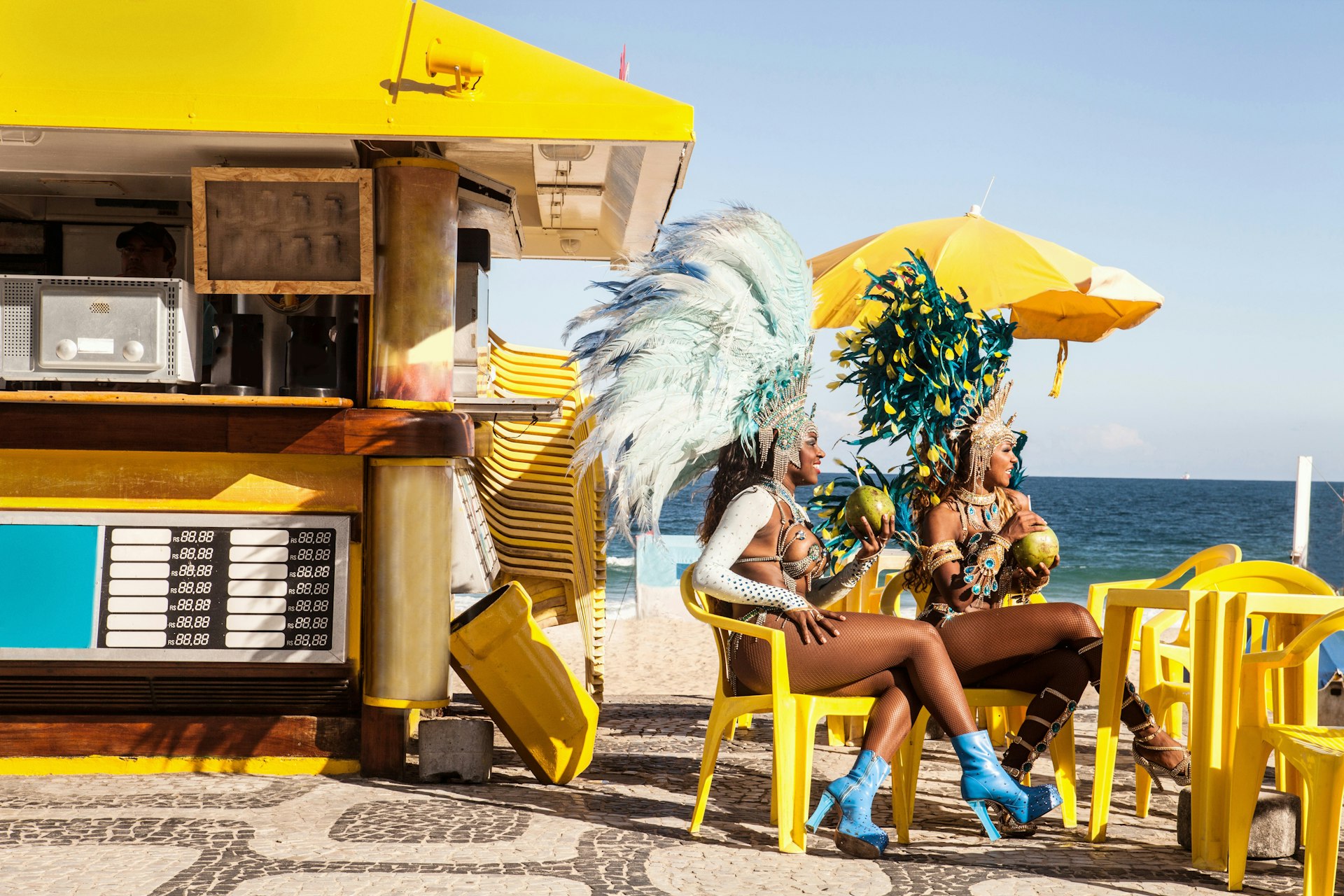
3. Stay in the South Zone
Although each neighborhood hosts its own bloco, you’ll want to stay in Zona Sul (South Zone) to be close to the action. Two of the most popular places to stay are trendy Ipanema and Copacabana, home to the fabled beach. Other good options are Gloría, Flamengo and Botafogo.
Santa Teresa, an artistic neighborhood, is also a wonderful place to stay for Carnaval. It also hosts one of the best blocos: Carmelitas. Note, though: sometimes Uber drivers won’t pick up or drop off in Santa Teresa at night – it's a bit isolated up on the hilltop. Other neighborhoods to reconsider include favelas like Rocinha, anywhere in Zona Norte, and Lapa, which is super loud and the parties never stop.
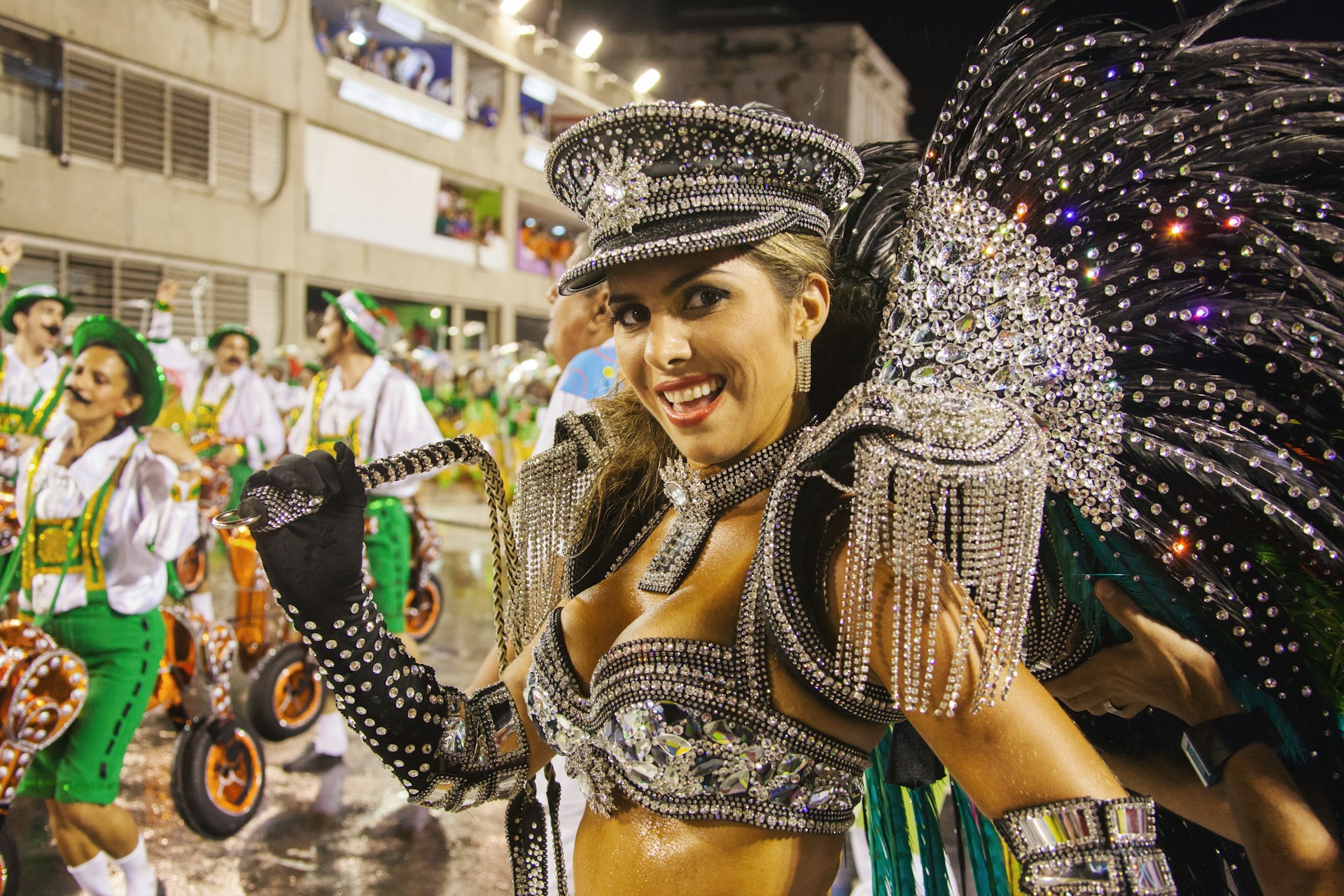
4. It’s more fun if you dress up
Brazilians go all out for Carnaval, and so should you! I once crossed a pedestrian crossing when a few guys dressed as Spartan warriors lunged in front of the cars with their swords and shields to stop traffic. It was amazing – and it wasn’t even the craziest thing I'd seen at Carnaval. Like Halloween, wear a costume to fit in, but your outfit doesn't have to make sense. So wear that wig. That wild dress. That crazy mask. Whatever you wear, make it colorful. But keep in mind that it’s peak summer in Rio, so don’t pick something that’ll make you too sweaty.
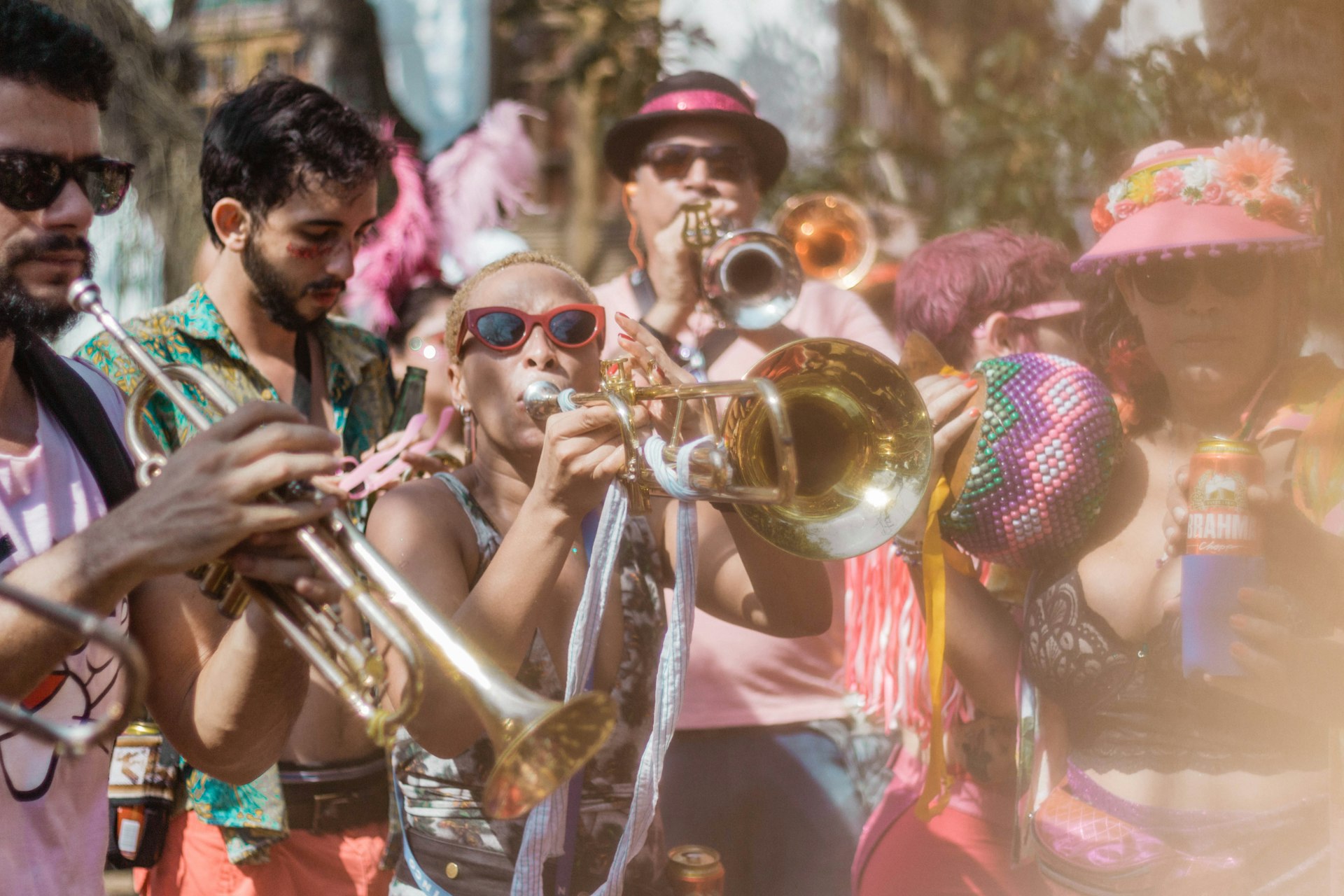
5. You can’t go to all the blocos
Blocos are free street parties with loud music – both with instruments and speakers. They usually involve professional dancers (though everyone’s having a shuffle). With 453 blocos at Rio de Janeiro Carnaval, don’t even think about visiting them all. For the first time, Rio has listed all the blocos on a handy website. Make a hit list. Key blocos to experience include Bloco das Carmelitas (February 9 at 1pm in Santa Teresa), which kicks off Carnaval; Corda da Bola Preta (February 10 at 7am in Centro), which dates back more than a century; Bloco do Sargento Pimenta (February 12 at 8am in Gloría), also known as the Beatles Bloco, where people dress and act like “All You Need Is Love”; and Simpatia é Quase Amor (February 11 at 2pm in Ipanema) on the boardwalk. Many blocos start early in the morning, so don’t expect to get much sleep if you plan to party all night. If you’re with a group, remember it's easy to get lost moving between blocos.
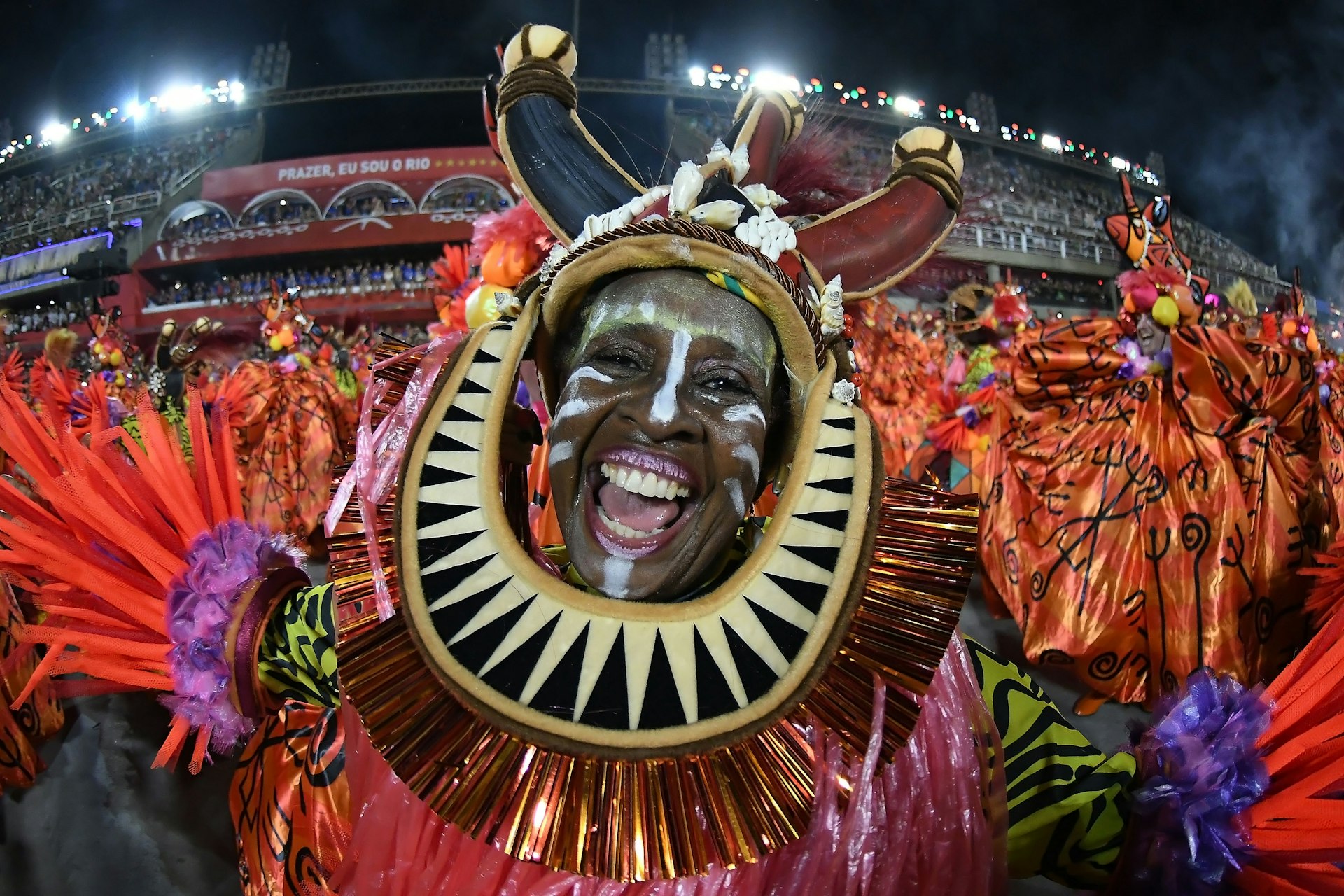
6. The Sambadrome isn’t cheap (but it’s worth it)
The grand spectacle of Carnaval is the elaborate performances with dancers, music and giant decorated floats in the Sambódromo. Conceptualized by the Brazilian architect Oscar Niemeyer in 1984, The legendary venue seats nearly 100,000 people.
Rio has more than 100 samba schools that spend all year practicing and preparing for their performances in the Sambódromo. Tickets aren’t cheap but don’t miss it. The official website sells seats for the arquibancadas (bleachers) or camarotes (boxes). However, they sell out quickly and are already sold out for 2024. You can find resale tickets on Ticketmaster and Viator but expect to pay US$100 or more. One strategy to get cheaper tickets is to wait until after the first procession passes and buy them outside the entrance from scalpers – with some negotiating of course.
But I have to fess up about something. In my two previous visits to Carnaval, I didn’t go to the Sambódromo and still had a great time. Go if you have the funds, but you can still have fun without it.
7. Be mindful of your safety
I’m not going to tell you that Carnaval doesn’t involve some degree of risk. I’m also not going to be a fearmonger and tell you not to go. You can, and probably will, enjoy Carnaval without any scary incidents. Millions of people who visit Rio every year do.
That doesn’t mean you shouldn’t be careful. Common sense rules apply. Don’t walk alone in the dark. Don’t pull out your phone all the time. Don’t put your wallet in your back pocket or an open bag. Don’t sleep on the beach. Honestly though, just relax. If you’re terrified about danger the whole time you’re not going to enjoy yourself.
8. The credit card is king
Yes, you can pay in cash (Brazilian reales), but I prefer a credit card. Most vendors in Rio, even those selling beer cans on the street, take Visa and Mastercard. And while your bank might charge you a foreign transaction fee, it gives you peace of mind to know that if you lose your card you can probably get the money back from your bank after you report it stolen. With cash, what’s gone is gone.
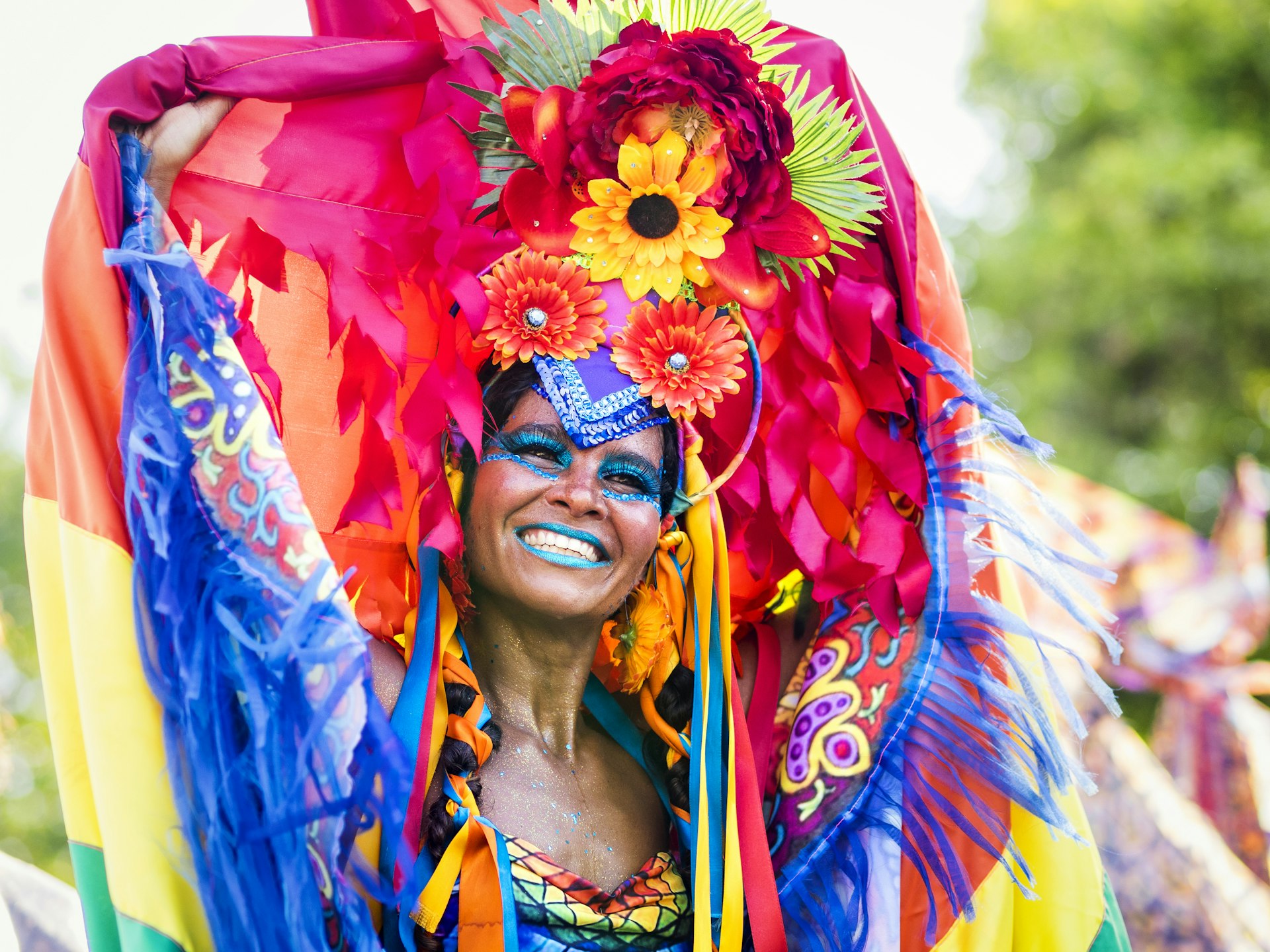
9. Um pouco de Portugés goes a long way
Brazil is a country of 215 million people and the vast majority don’t speak English. They usually don’t speak much Spanish either – but don’t let that deter you. I didn’t speak any Portuguese at my first Carnaval and managed to communicate in Portuñol (Spanish and a few Portuguese words) and a lot of flailing around. The more Portuguese you know the better. Locals really do appreciate the effort.
10. Take the subway
With the streets clogged with blocos – and much of Rio all but shut down – use the Metro instead of Uber or taxis during Carnaval. If you’ve got FOMO about the parties, know that there’ll likely still be live music on the subway.
11. Pace yourself
Don’t even try to keep up with Brazilians during Carnaval – they’re built for this and have plenty more experience than you. Some rules to survive by: Make sure you get some sleep when you can. Caipirinhas don’t count as water. Wear sunscreen. And eat food – açai is great, but you’ll need something a little more substantial to soak in all that booze if you’re drinking.
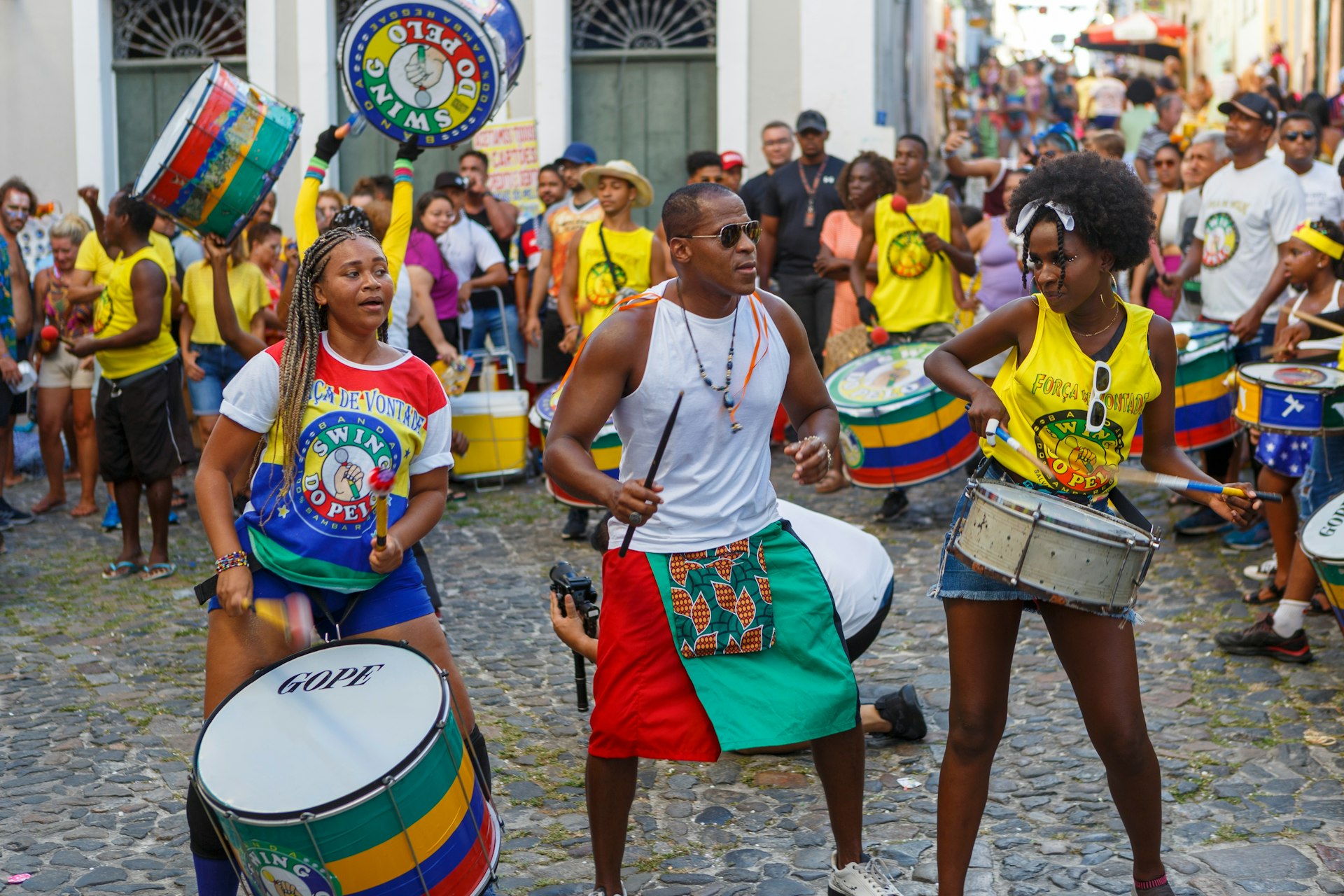
12. It’s ok to go to a different Carnaval
Rio Carnaval is just one of many in Brazil – it isn’t even necessarily the best. Many believe Salvador in the northeastern state of Bahía is the best Carnaval. Others say it’s Olinda’s or Recife’s. There are lots of different Carnaval celebrations across Brazil that are gracefully less crowded but still worth going to. Consider elsewhere if you haven’t already booked Rio.

13. Stick around in Rio
Don’t dare go to Rio for Carnaval without checking out this wonderful city, too. Flanked by lush mountains and marvelous beaches, Rio is arguably the most beautiful city in the world. Take the gondola (or walk) up to Pão de Açúcar. See Cristo, the 7th Wonder of the World (or don’t, it’s pricey and just a big statue in my humble opinion). Check out the truly amazing Museu do Amanhã and take a video atop the Escadaria Selarón like you’re Snoop Dogg and Pharrell. And with that, I’ll leave you to have your own mind-rupturing experience. See you on the streets!

